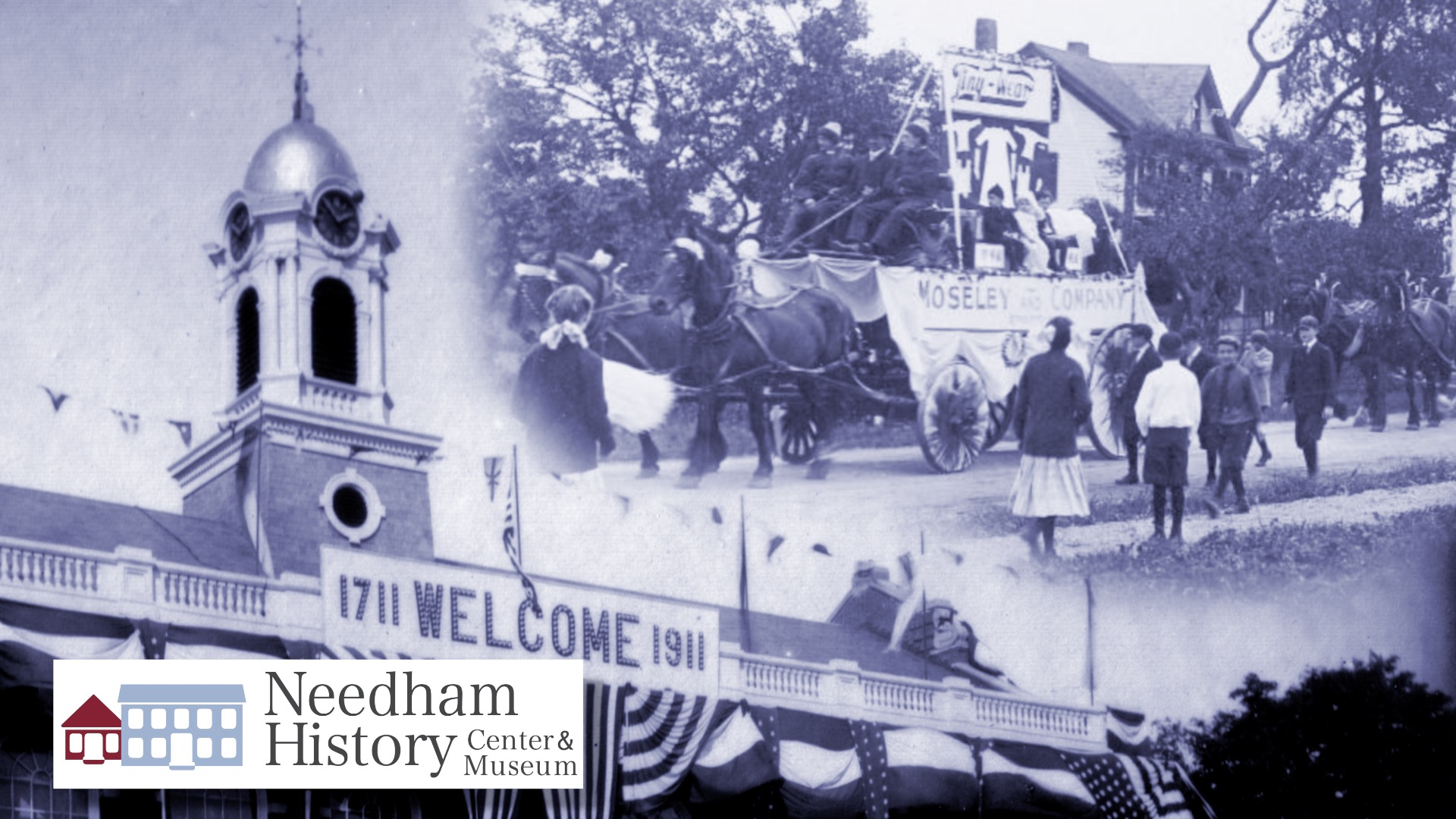
Needham History: An Unforgettable Celebration
There has never been a parade in Needham to match.
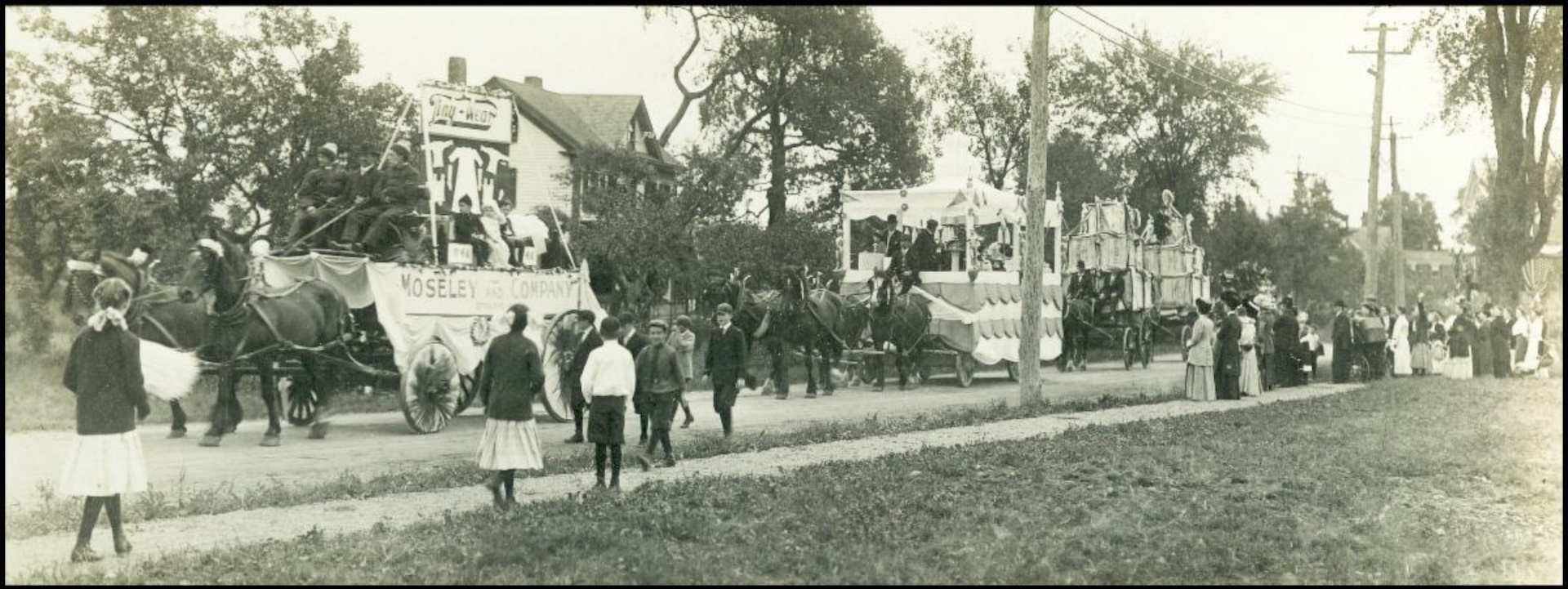 The parade proceeding down Highland Avenue. The float in front was from the Moseley Company (knitters) and showed off their main product – “Tiny-Wear” underwear for children. The Moseley’s float is followed by the first of the 16 floats belonging to the Carter Company.
The parade proceeding down Highland Avenue. The float in front was from the Moseley Company (knitters) and showed off their main product – “Tiny-Wear” underwear for children. The Moseley’s float is followed by the first of the 16 floats belonging to the Carter Company.
“An Unforgettable Celebration under Unclouded Skies”
It is summer, and the parade season is upon us. In Needham, of course, we look forward to the annual town celebrations sponsored by the Exchange Club – the fireworks on July 3rd, followed by the parade on July 4th. The parade is the highlight of my summer. I am always so thrilled at how many neighborhoods, organizations, and businesses show up to march or sponsor floats. Not to mention the performers who manage to perform while being trundled along the roads in flatbeds (the Liberty Jazz Band!) In the 32 years we’ve lived in town, we’ve missed the parade only once – for an overseas trip in 2007. I even remember standing in the 60-degree drizzle (1994?) with our toddler daughter, watching a truly amazing array of floats and vehicles. Although there was almost no one else out there watching, we would not have missed it.
That said – and with all due respect to the Exchange Club – there has never been a parade in Needham to match the sheer elaborate spectacularness of the Civic and Trades Parade to celebrate the Needham Bicentennial in 1911. (Not even the 250th parade in 1961, though it was longer and did feature armaments).
The 1911 parade was more than just a community celebration. Yes, it was the Bicentennial year, and that is an important milestone. But it was also a manifestation of the changes that Needham was going through. Like all such towns, Needham’s economy was originally based on agriculture. Cattle-grazing drew settlers into the lands north of the Charles River from Dedham as early as the 1630s, and dairy remained the mainstay agricultural industry until well into the 20th century. By the late 19th century, however, the town was building a retail base in the Great Plain and a manufacturing base in the Heights – both a result of the new availability of train service. By the turn of the 20th century, the Board of Trade began to market Needham as a suburban residential destination – lots of open space, clean air and water, abundant mortgage financing, and plenty of train and trolley service. As a result, the town population rose rapidly, nearly doubling between 1900 and 1920.
It was this new emphasis on growth and retail that formed the focus of the Bicentennial parade. While the Centennial commemorations featured church services and the Centennial Sermon, the Bicentennial was all about commerce and progress. The highlight of the celebrations was the Civic and Trades Parade, a showcase for the variety of Needham businesses large and small. The theme was ‘1711 to 1911,’ and many of the businesses contrasted the old 1711 way of doing things with the modern 1911 way. An account of the Bicentennial events was compiled by the Committee the following year and published as Needham’s Bicentennial Celebration (1913).
Top: the float of the E.E. Dailey Paper Box Company. Dailey’s employees rode on the float, with boxes on their heads spelling out E-E-D-A-I-L-E-Y.
Bottom: House builder Wilbur Blades shows off a miniature but very detailed version of his wares.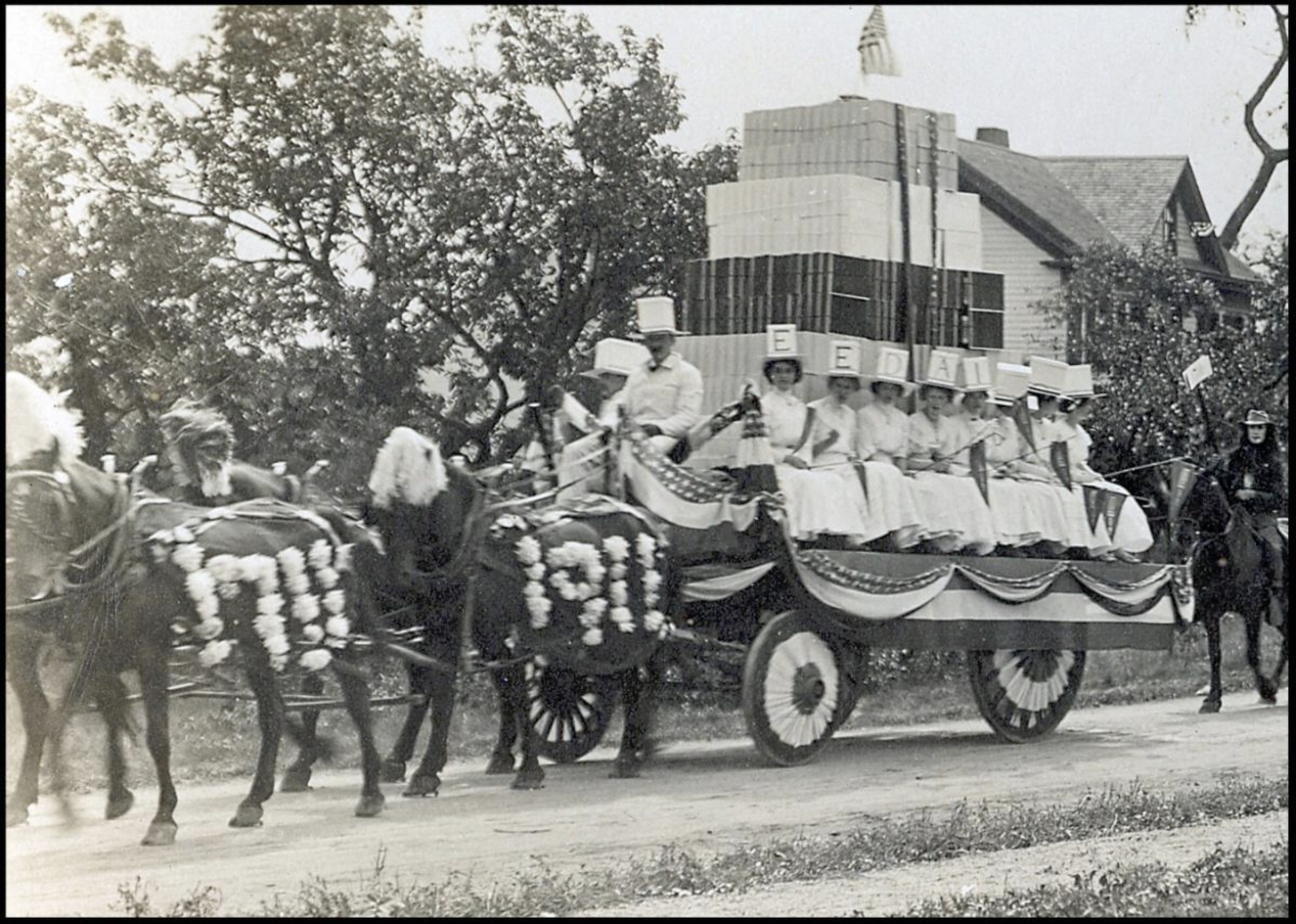
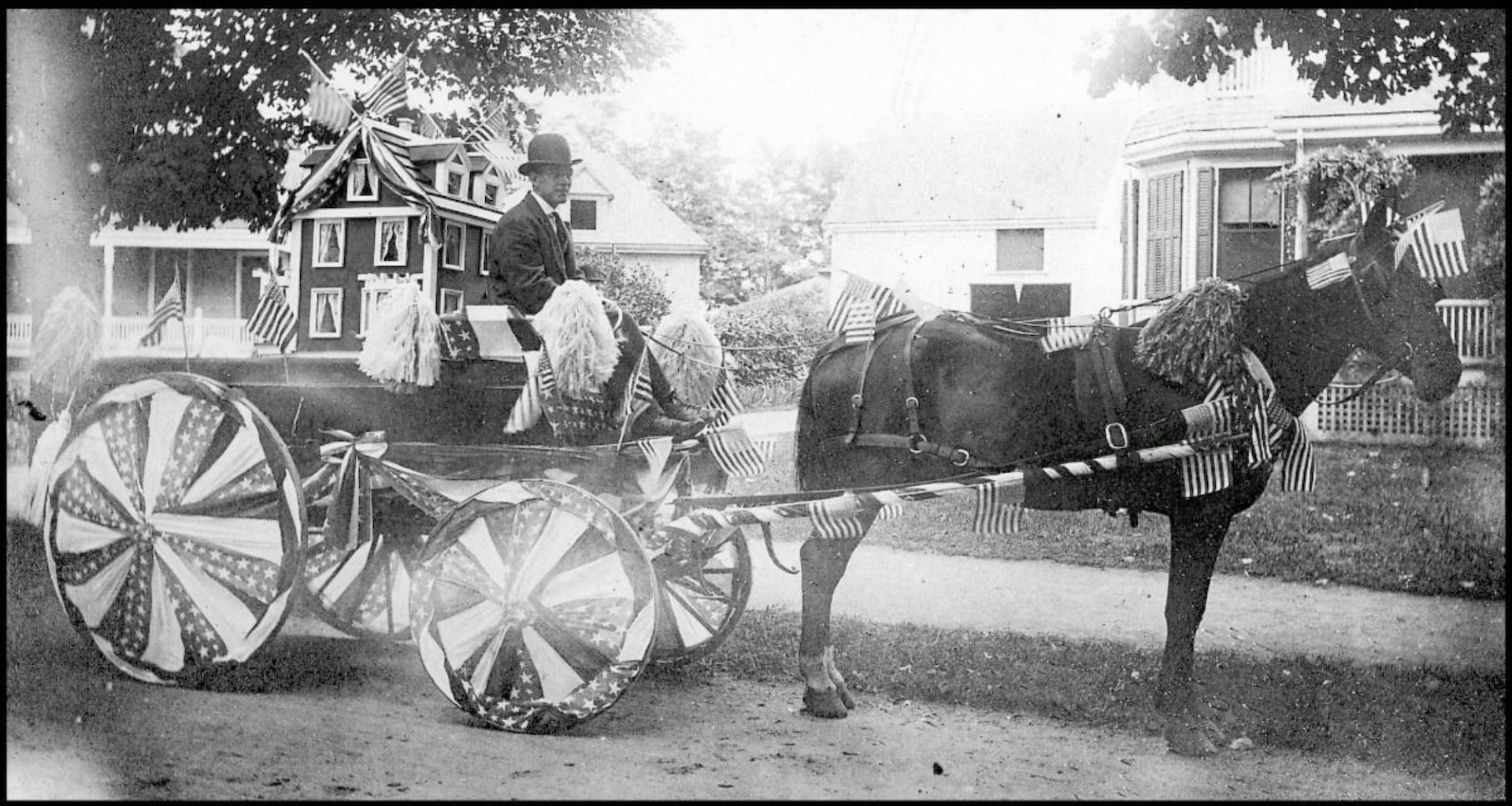
The parade took place on September 19th, 1911. Based on the pictures, the parade apparently assembled on Great Plain and Dedham Avenues and proceeded down Highland Avenue to the Heights. After the usual procession of town officials and police and fire departments had passed, the floats began. Oh, the floats! A cavalcade of civic pride, business boosterism, and just plain weird ingenuity. First, of course, was the Living Town Seal, in which three members of Needham’s oldest families reproduced the scene on Needham’s town seal, though I assume at the original event the town fathers’ hats fit better and Nehoiden did not have a moustache.
Prominent businesses had large displays. Crossman’s Market had five wagons, displaying the array of goods available in the store, and led by T.J. Crossman himself on horseback. The George Wye Company, knitters, had two floats – one showing “Ye Knitting of 1711” (several ladies plying their knitting needles) accompanied by “The Knitting of 1911” – a modern manufacturing business establishment with a knitting machine and power sewing table, plus an ‘office’ that displayed a telephone and typewriter. The blockbuster of the parade was the Carter Company, befitting the largest business in town. Carter’s brought sixteen floats, which included a display of modern knitting machinery and all of its many employees; it took a full five minutes to pass. One of my favorites, the E.E. Dailey Paper Box Company float, featured a large pyramid of their boxes, surrounded by a ring of white-clad young girls (his employees), each of whom wore a box on her head that spelled out the name of the company.
Smaller businesses also went all out. The Bourne & Sons Piano Company float included a piano player (or player-piano? description not clear). Wilbur Blades, a prominent house builder in town, had a cart with a fully-detailed miniature house. Grocer C.W. Woodbury had a bunting-covered wagon displaying a wide array of vegetables. Hillside Dairy Farm had a pen on wheels with cattle and dairymen.
Representing the cutting-edge of modern technology, New England Telephone & Telegraph had a working telephone switchboard on their float (“Needham to Denver in 3 minutes”). Edison Light had a number of modern electrical appliances and conveniences on board, and unlike most was motor-driven, rather than horse-drawn. House painter F.H. Clews drove a Ford Model T, to which he had affixed a box for his equipment in place of the rumble seat, showing how cars could be used by the modern businessman.
Sadly, we do not have pictures of some of the most daring and adventurous floats. The Needham Young People’s Association featured a Mr. Caddick, who did weight lifting and calisthenics demonstrations along the route. Blacksmith John Fitzgerald had a working forge operating on his float, which he used to shoe a pony. But the Highway Department float takes the prize for sheer reckless courage: “Float — Highway Department, with steam drill pulled by the steam roller—representing rock drilling 1711—1911. At one end of the float three men were industriously drilling a small rock, two were striking with sledges on a drill held by the third; while at the other end a modern steam rock drill was steadily drilling through a large boulder by means of steam supplied by a twelve-ton road roller which at the same time furnished the motive power for the whole.” Apparently no limbs were lost.
There were so many others, some pretty straightforward displays of goods and wares, and others more mysterious in intent – John McDowall “dressed as a Colonial” while riding a motorcycle; the Crossman and Ross families dressed as a Japanese family and rode in a car decorated with wisteria; the float of John Lawson (Teaming and Contracting) featured “five Italians showing how to use the pick and shovel” (this was a lost art??)
Some of these displays may seem quaint now, but at the time they showed the best that the town had to offer. More than that, they showed the town’s pride in itself, in its businesses, and in its community. Maybe the names and technology have changed over the years – but isn’t that what still brings us together every 4th of July?
The five carts from Crossman’s Market assemble beside the Unitarian Church. Many of the products he sold are still familiar to us – such as Sunshine Biscuits, and Chase & Sanborn Coffee. TJ Crossman himself, on horseback in the center of the picture, led his wagons in the parade.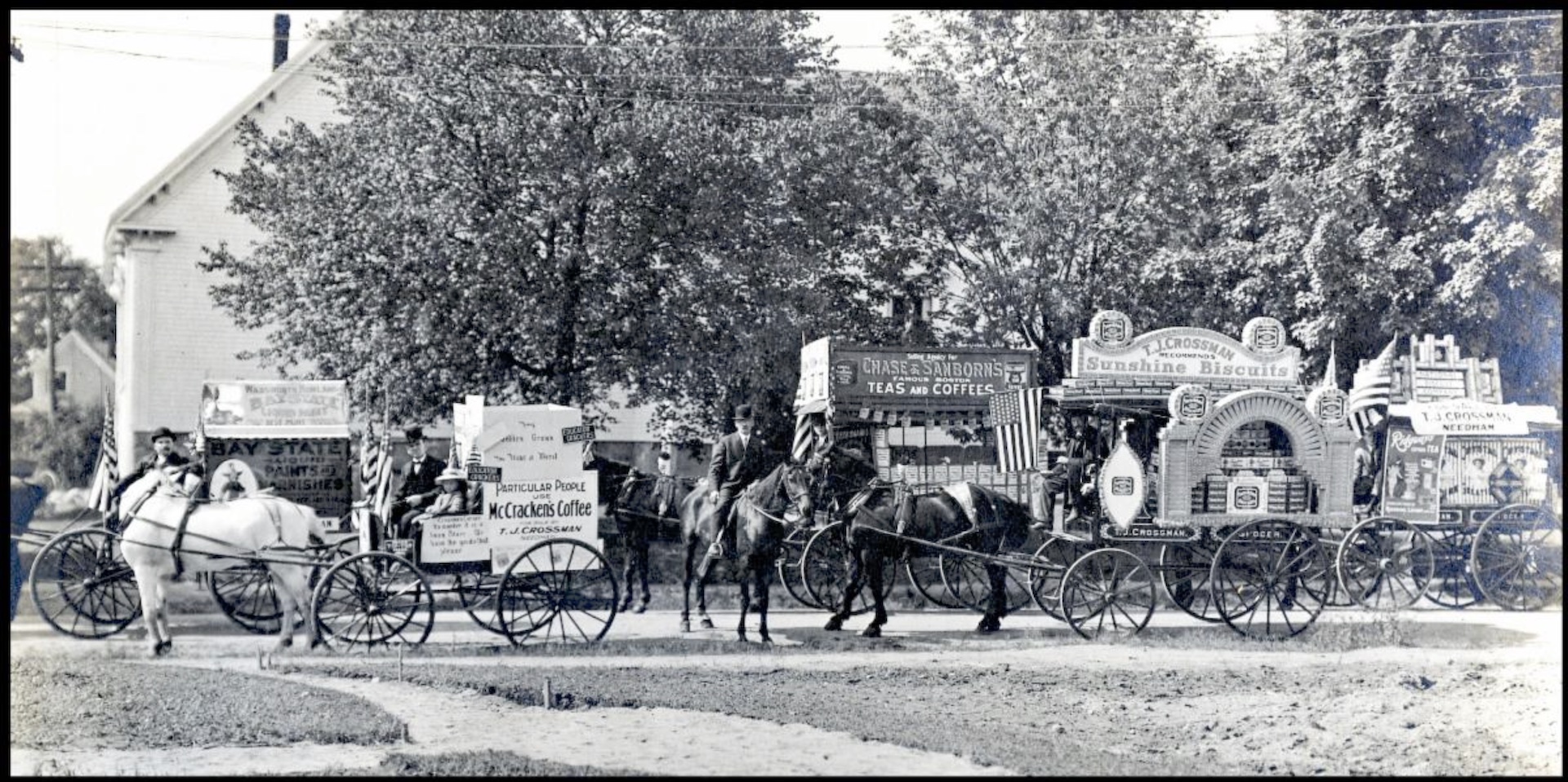
 |
Gloria Polizzotti Greis is the Executive Director of the Needham History Center & Museum. For more information, please see their website at www.needhamhistory.org. |

